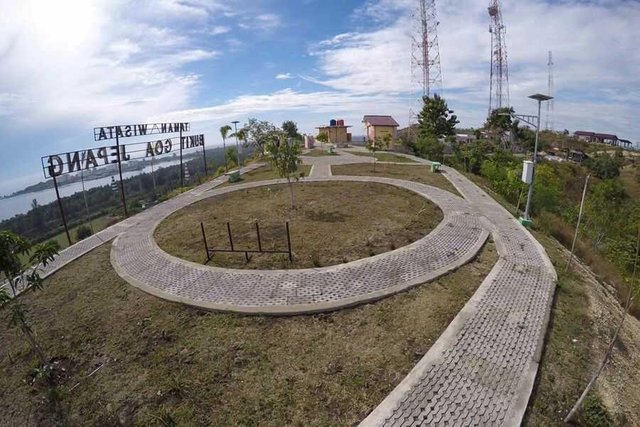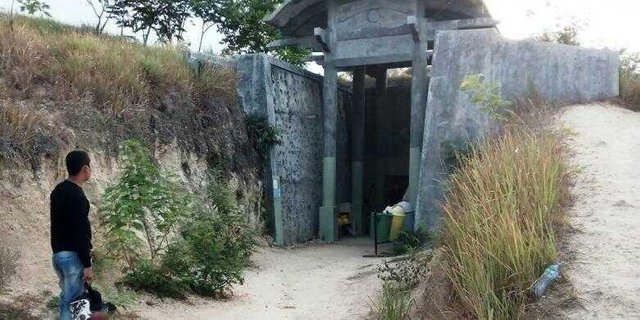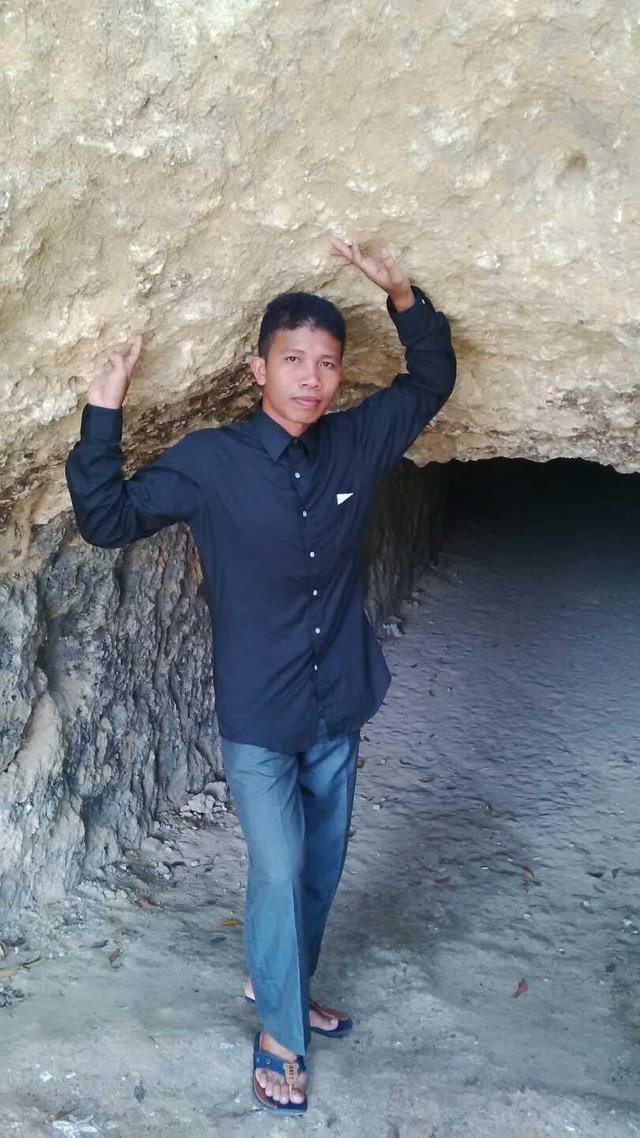wisata alam goe jepang (natural tourism Japanese cave)

goa jepang adalah sebuah lobang bawah tanah yang digali oleh orang aceh yang dipekerja paksakan oleh serdadu-serdadu jepang untuk dijadikan sebagai benteng pertahanan/persembuyian mereka. goa ini juga menyimpan beberapa sejarah.
Kehadiran Jepang di Aceh dimulai awal 1942. Jepang membangun benteng pertahanan dan aneka macam goa di daerah itu.
Konsep pertahanan dengan membangun benteng dan goa ini dilakukan Jepang sepanjang pinggir pantai dan perbukitan di Aceh.
Lihatlah sepanjang pinggir pantai Lhokseumawe, Sabang, dan pantai lainnya, Anda akan mudah menemui benteng sisa peninggalan Jepang.
Begitu juga goa. Khusus di Lhokseumawe, sepanjang tahun 1942, tentara Jepang memaksa ratusan rakyat Aceh untuk membangun benteng dan goa.
Salah seorang saksi sejarah, Iskandar (89) mengisahkan, begitu masuk ke Aceh, Jepang memutuskan membangun pusat pertahanan di perbukitan Desa Blang Payang, Kecamatan Muara Dua, Kota Lhokseumawe.
Bukit itu berada 120 meter di atas permukaan laut. Dari arah bukit membentang Samudera Hindia, sehingga sangat cocok dijadikan pusat pemantauan Jepang kala itu.
“Jepang memutuskan lokasi pertahanannya di Blang Payang. Sekarang dikenal dengan bukit goa Jepang. Seluruh goa itu dibangun oleh rakyat dan di bawah ancaman senjata.
Dia menjelaskan, lebar mulut goa peninggalan Jepang itu yakni 2 x 3 meter.
Lhokseumawe dihimpit oleh dua bukit, yaitu Cot Panggoi dan Ramulah. Di Aceh, goa dikenal dengan sebutan guha atau keurokrok (tempat persembunyian). Goa itu membelah area perbukitan di kawasan itu.
Selain tempat persembunyian, goa tersebut kerap dipakai untuk menyekap para tahanan.
“Kami dulu sebagai pekerja pembuat lobang goa Jepang itu. Dipaksa oleh Jepang. Romusha. Tanpa gaji,” kenang Abu Is.Sepanjang hari, siang dan malam, rakyat mengeruk tanah untuk membuat goa. Nyaris tanpa istirahat.
“Jepang ingin seluruh goa dan benteng segera selesai. Mereka khawatir diserang oleh pejuang Indonesia atau negara lainnya,” terang Abu Is.
Hasilnya, akhir Desember 1942, sebanyak 17 goa dan 8 benteng diselesaikan oleh pekerja. Sejak saat itu pula, Jepang menggunakan benteng dan goa itu untuk seluruh pasukan mereka.
ini foto pintu masuk ke goa jepang;
Japanese cave is an underground hole dug by aceh people who were forced to work by Japanese soldiers to serve as their fortress / hideout. The cave also stores some history.
The Japanese presence in Aceh began in early 1942. The Japanese built a fortress and various caves in the area.
The concept of defense by building the castle and cave is done by the Japanese along the coast and hills in Aceh.
Take a look along the beaches of Lhokseumawe, Sabang and other beaches, you will easily find the remains of the remains of Japan.
So is the cave. Especially in Lhokseumawe, throughout 1942, the Japanese army forced hundreds of Acehnese to build fortresses and caves.
One of the historical witnesses, Iskandar (89) recalled that once he entered Aceh, the Japanese decided to build a defense center in the hills of Blang Payang village, Muara Dua sub-district, Lhokseumawe city.
The hill is located 120 meters above sea level. From the direction of the hill stretching the Indian Ocean, so it is suitable to be a monitoring center of Japan at that time.
"Japan decided the location of its defense in Blang Payang. Now known as the hill of Japanese cave. The entire cave was built by the people and under the threat of weapons.
He explains, wide mouth of the cave of the Japanese heritage that is 2 x 3 meters.
Lhokseumawe is squeezed by two hills, Cot Panggoi and Ramulah. In Aceh, caves are known as guha or keurokrok (hiding places). The cave divides the hilly area of the region.
In addition to hiding places, the cave is often used to hold the prisoners.
"We used to work as a Japanese caterpillar maker. Forced by Japan. Romusha. Without salary, "recalls Abu Is. Throughout the day, day and night, the people dredge the ground to make the cave. Almost no rest.
"Japan wants the whole cave and fortress to be completed. They are afraid of being attacked by Indonesian fighters or other countries, "explained Abu Is.
As a result, at the end of December 1942, 17 caves and eight forts were completed by the workers. From that moment onwards, the Japanese used the castle and cave for their entire army.
this photo of the entrance to the Japanese cave;

Objek wisata
Saat ini, goa itu dijadikan obyek wisata. Dinding goa telah dipasang paving block. Namun sebagian besar dinding tetap dipertahankan sesuai bentuk aslinya.
Guratan senjata masih terlihat jelas di dinding itu. Konon di ruang tahanan itu, ratusan nyawa melayang karena disiksa.
Bahkan di beberapa goa tersedia ruang tahanan yang hanya cukup untuk berdiri satu orang. Tahanan ini dibiarkan berdiri selama 24 jam dalam sehari.
Di goa, layaknya model goa Jepang, pada umumnya terdapat ruang pengintaian, logistik, tahanan, ruang makan, dapur dan tempat kamar tidur. Kini, goa itu menjadi saksi bisu kekejaman tentara Jepang di Indonesia.
Tourist attraction
Currently, the cave is used as a tourist attraction. Cave walls have paving blocks installed. But most of the walls are retained according to their original form.
Scars of weapons are still visible on the wall. It is said that in the detention room, hundreds of lives floated because of torture.
Even in some caves there is a detention room that is just enough to stand one person. These prisoners are left standing for 24 hours a day.
In caves, like Japanese cave models, there is generally a reconnaissance, logistics, custody, dining room, kitchen and bedroom space. Now, the cave is a silent witness to the atrocities of Japanese soldiers in Indonesia.
ini foto goa jepang dilihat dari dalam:
this photo of japanese cave seen from inside:

I don't care if the robot came to your ..
I just wanna upvote ya and resteem your ... cheerrrrssss dude !